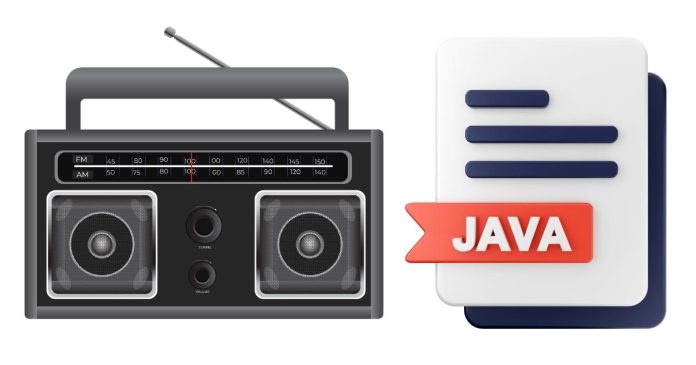Radio buttons are one of the most commonly used form elements in web development. They allow users to choose a single option from a set of mutually exclusive choices. When building interactive web applications, you may need to check or select a radio button programmatically using JavaScript.
In this blog post, we will walk you through the different ways to check a radio button using JavaScript, along with code examples and explanations.
What are Radio Buttons?
A radio button is an HTML input element that allows the user to select one option from a group of choices. Only one radio button in a group can be selected at a time. If a user selects a different radio button, the previously selected radio button will automatically be deselected.
Here is a simple example of radio buttons in HTML:
<form>
<label><input type="radio" name="color" value="red"> Red</label><br>
<label><input type="radio" name="color" value="green"> Green</label><br>
<label><input type="radio" name="color" value="blue"> Blue</label><br>
</form>
In this example, the user can select one of the colors: Red, Green, or Blue.
How to Check a Radio Button Using JavaScript?
There are different ways to check (select) a radio button programmatically using JavaScript. Below are a few approaches to do so.
1. Using the checked Property
The simplest way to check a radio button using JavaScript is by setting its checked property to true. The checked property determines whether the radio button is selected or not. To select a radio button, you simply need to set this property to true.
Example:
<!DOCTYPE html>
<html lang="en">
<head>
<meta charset="UTF-8">
<meta name="viewport" content="width=device-width, initial-scale=1.0">
<title>Check Radio Button Example</title>
</head>
<body>
<form>
<label><input type="radio" name="color" value="red" id="red"> Red</label><br>
<label><input type="radio" name="color" value="green" id="green"> Green</label><br>
<label><input type="radio" name="color" value="blue" id="blue"> Blue</label><br>
</form>
<button onclick="checkRadioButton()">Check Green Radio Button</button>
<script>
function checkRadioButton() {
document.getElementById('green').checked = true;
}
</script>
</body>
</html>
How It Works:
- We have three radio buttons: Red, Green, and Blue.
- When the “Check Green Radio Button” button is clicked, the
checkRadioButton()function is called. - Inside the function, we use
document.getElementById('green').checked = true;to check the radio button with theidofgreen.
2. Using the querySelector Method
You can also use the querySelector method to select a specific radio button by its name or value attribute. This is useful when you want to select a radio button based on the group name or value rather than the id.
Example:
<!DOCTYPE html>
<html lang="en">
<head>
<meta charset="UTF-8">
<meta name="viewport" content="width=device-width, initial-scale=1.0">
<title>Check Radio Button Example</title>
</head>
<body>
<form>
<label><input type="radio" name="color" value="red" id="red"> Red</label><br>
<label><input type="radio" name="color" value="green" id="green"> Green</label><br>
<label><input type="radio" name="color" value="blue" id="blue"> Blue</label><br>
</form>
<button onclick="checkRadioButton()">Check Blue Radio Button</button>
<script>
function checkRadioButton() {
const radioButton = document.querySelector('input[name="color"][value="blue"]');
radioButton.checked = true;
}
</script>
</body>
</html>
How It Works:
- We select the radio button using
document.querySelectorand specify thenameandvalueattributes. - Once the correct radio button is selected, we set its
checkedproperty totrueto check it.
3. Using the querySelectorAll Method to Check a Radio Button in a Group
If you want to check a radio button in a group, you can use querySelectorAll to target all the radio buttons within a specific group. This method is particularly useful when dealing with dynamic or large sets of radio buttons.
Example:
<!DOCTYPE html>
<html lang="en">
<head>
<meta charset="UTF-8">
<meta name="viewport" content="width=device-width, initial-scale=1.0">
<title>Check Radio Button Example</title>
</head>
<body>
<form>
<label><input type="radio" name="color" value="red" id="red"> Red</label><br>
<label><input type="radio" name="color" value="green" id="green"> Green</label><br>
<label><input type="radio" name="color" value="blue" id="blue"> Blue</label><br>
</form>
<button onclick="checkRadioButton()">Check First Radio Button</button>
<script>
function checkRadioButton() {
const radios = document.querySelectorAll('input[name="color"]');
radios[0].checked = true; // Check the first radio button
}
</script>
</body>
</html>
How It Works:
- We use
querySelectorAllto get all the radio buttons in thecolorgroup. - We access the first radio button using
radios[0]and set itscheckedproperty totrue.
4. Using a Loop to Check a Radio Button
If you need to check a radio button based on a condition or some other logic, you can loop through all the radio buttons and select one programmatically.
Example:
<!DOCTYPE html>
<html lang="en">
<head>
<meta charset="UTF-8">
<meta name="viewport" content="width=device-width, initial-scale=1.0">
<title>Check Radio Button Example</title>
</head>
<body>
<form>
<label><input type="radio" name="color" value="red" id="red"> Red</label><br>
<label><input type="radio" name="color" value="green" id="green"> Green</label><br>
<label><input type="radio" name="color" value="blue" id="blue"> Blue</label><br>
</form>
<button onclick="checkRadioButton()">Check Green Radio Button</button>
<script>
function checkRadioButton() {
const radios = document.getElementsByName('color');
for (let i = 0; i < radios.length; i++) {
if (radios[i].value === 'green') {
radios[i].checked = true; // Check the Green radio button
}
}
}
</script>
</body>
</html>
How It Works:
- We use
getElementsByNameto get all the radio buttons with the namecolor. - We loop through the list of radio buttons and check the one with the value
green.
Conclusion
Checking a radio button using JavaScript is a simple and essential task when developing dynamic web forms. Whether you are selecting a radio button based on its id, name, or value, JavaScript provides multiple ways to achieve this goal efficiently. By understanding and implementing these methods, you can create more interactive and user-friendly web applications.
By using checked, querySelector, or looping through radio buttons, you can easily automate the process of selecting radio buttons, making your web forms smarter and more responsive to user input.


